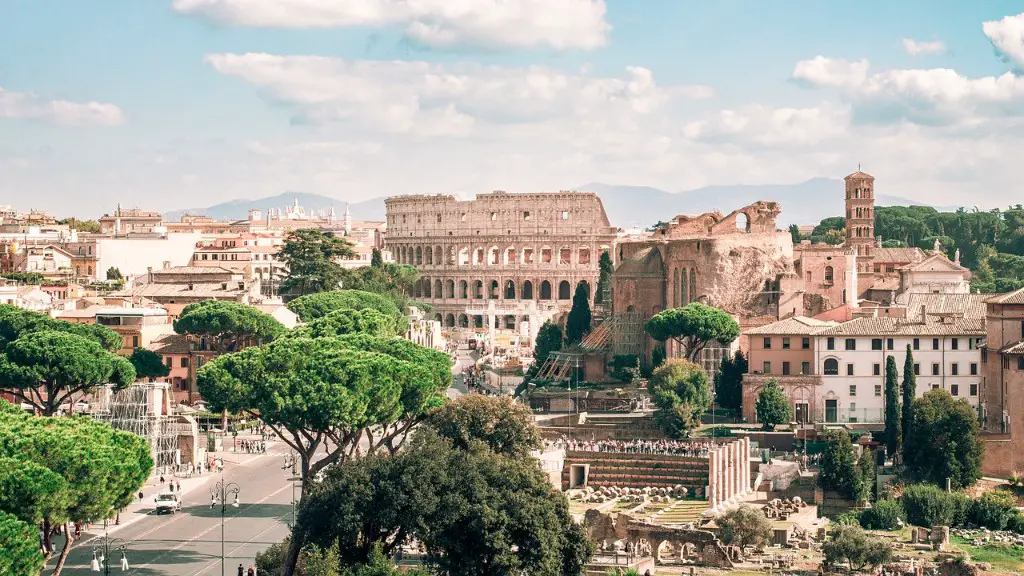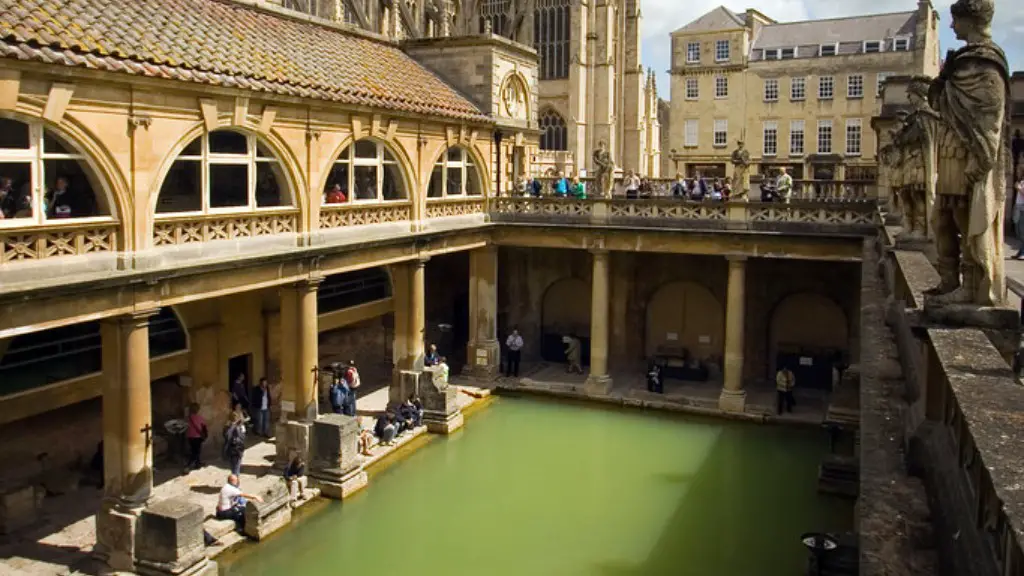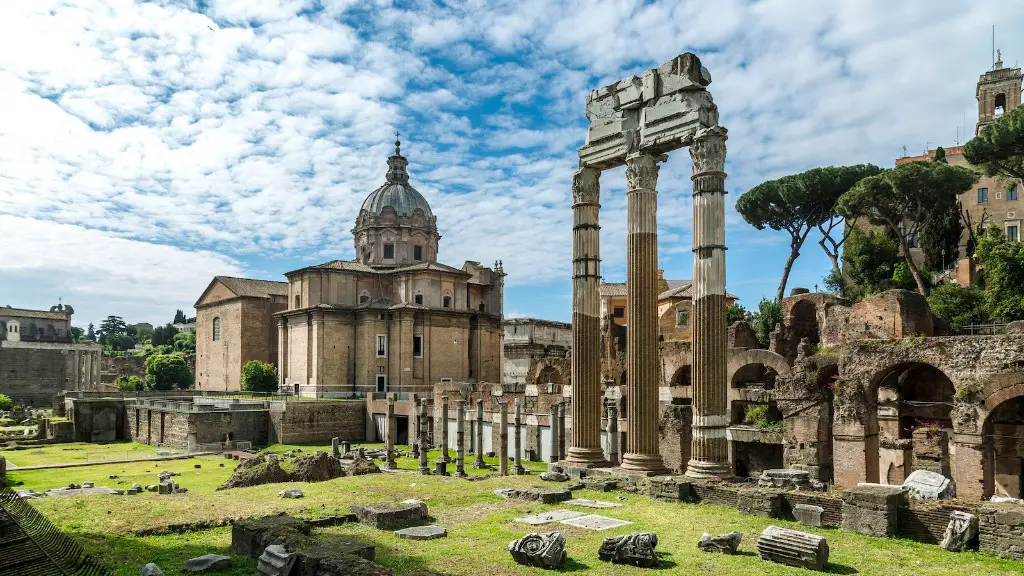Trade in Ancient Rome
Ancient Rome was one of the most advanced civilisations of its time. The city’s trade and commerce were essential to its ongoing prosperity. Ancient Rome’s trading activities engaged numerous products of varying sources. Rome’s trade was often conducted with those in the more rural areas. The people of Rome had access to many resources and tools that enabled them to develop their economy. Ancient Rome traded a wide range of goods, such as food, spices, silks, gemstones, and other valuable commodities.
Rome also relied on its vast network of trading routes to bring in food from other provinces, which helped meet the needs of the citizens. Rome used the Mediterranean Sea and its rivers to facilitate the transportation of goods that were vital components to the Roman Empire. Ancient Rome’s trading system was so efficient that it was able to access the resources of other regions, forming a complex network spanning multiple countries.
The Roman economy relied heavily on the slaves who worked in the city’s public and private markets. These enslaved people were often smuggled in from foreign lands and were forced to work in order to provide the necessary labour to facilitate Rome’s thriving trade. The trade of slaves became an important part of Rome’s economy as they were used as a major source of labour and also as a form of payment to settle debts.
The Romans also engaged in trading precious metals, such as gold and silver. This helped increase the wealth and power of the Romans in the region. These precious metals were mined from different parts of the Roman Empire, and then traded throughout the region. The coins minted from these metals were used as forms of payment and to finance various activities. Rome also engaged in trade of other precious items such as bronze, copper, and iron.
In addition to the trading of goods, Ancient Rome also built up its economy through its banking services. The Roman banking system was based on the concept of usury, or the practice of making payments on loans. This allowed the people of Rome to gain access to money that they could not afford to purchase outright and helped to fund major public works such as temples and roads.
The Roman currency was also used as a means of facilitating trade. There were various types of coins that were minted by the Roman government and used in daily life. Merchants and traders would carry these coins with them as a means of payment for the goods that they sold. In addition, the Roman banking system also allowed for the exchange of currencies between different countries.
Types of Goods Traded in Ancient Rome
Besides the precious metals and coins that were used as currency, many other goods were also traded in Ancient Rome. Food was an extremely important trade item, as it was essential to the survival of the Roman Empire. Rome had a thriving agricultural industry and traded a variety of food items such as grains, olives, fruits, fish, and vegetables.
Spices such as pepper and cinnamon were also highly sought after and were imported to Rome from distant lands such as India and China. Spices were used for both culinary and medicinal purposes. The Romans also traded luxury items such as clothes, carpets, furniture, and perfume to foreign countries in exchange for coins.
Gems and jewels were also widely traded in Ancient Rome. Rubies, emeralds, and pearls were highly sought after, as the citizens of Rome saw them as symbols of power and wealth. Animal skins and various animal products such as wool and fur were also traded on the Roman market.
Indeed, Ancient Rome was one of the most advanced civilisation in terms of their trade and economic development. The Romans had built up a vast trading network encompassing multiple countries and this helped them to access a wide range of goods. The Rome’s reliance on slaves, precious metals and coins, food, spices, and luxury items was largely responsible for its prosperity.
Role of Rome in Mediterranean Trade
The Mediterranean Sea was a crucial area in which Rome conducted its trade. Rome’s harbour ports located in the Mediterranean attracted merchants from all over the world. This allowed them to access the resources they needed in order to grow and prosper. Rome’s trade with the surrounding regions helped to improve the city’s economy.
The Roman provinces located in the Mediterranean Sea were responsible for the export of much of Rome’s goods. These provinces provided the necessary resources that contributed to Rome’s economic prosperity. Grain, fruits, vegetables, and other food items were mainly shipped from these provinces to Rome. Spices, such as pepper, cinnamon and ginger were also sourced from these regions.
Rome also imported materials from other regions for the construction of their majestic monuments and temples. The Romans traded for marble and other building materials that were used in the construction of these beautiful structures. The Romans also traded for exotic animals and animals skins, which were then used to adorn their homes.
Trade also enabled the Romans to access items from farther parts of the known world. China and India were two of the major sources of goods that were imported to Rome. Silk, precious gems and jewellery were amongst the items that were shipped from these countries. In addition, the Roman traders took advantage of other areas of the world, including North Africa and the Middle East.
Rome’s trading activities flourished and allowed the city-state to become a major power in the region. The Romans managed to acquire all the necessary resources for their growing economy through their trading activities. The resources acquired from other regions of the world enabled the Romans to create a vast empire that spanned multiple countries, providing them with power and wealth.
Impact of Rome’s Trade
Rome’s trading activities had a significant effect on the economic prosperity of the city. The development of its trading network helped to bring in wealth from other regions. This enabled the citizens to enjoy a higher level of living standards as they had access to many resources.
The trading activities of Ancient Rome also served to spread their culture and religion to other parts of the world. Rome’s language and religion were embraced by many of the regions they traded with. This helped to bring about the spread of the Roman Empire even further and the development of their culture in those areas.
Rome’s trading activities also helped to develop the infrastructure of the city. This allowed them to construct their major monuments, roads and buildings that helped to improve the overall appearance of the city. This also helped to attract merchants from other regions who would come to trade with the Romans.
Trade also enabled the Romans to access resources from other parts of the world. This was important as it allowed for the expansion of the Roman Empire. Roman coins were also exported to different areas to help fund major public works and purchase resources.
Rome’s trade activities also helped to create employment opportunities in the city. The merchants who came to trade were able to find employment in the city to do business. This provided them with an opportunity to make a living and to bring more wealth into the city. Additionally, the trading of slaves also provided employment to a great number of people.
Role of Merchants in Ancient Rome Trade
The success of Rome’s trading activities could not have been achieved without the merchants who took part in these activities. They played a vital role in transporting the necessary goods to the Romans. These merchants were often brave individuals who undertook difficult journeys in order to bring the necessary goods to Rome.
The merchants of Ancient Rome were also responsible for introducing new items to the city’s market. They were the ones who were responsible for bringing the necessary resources from distant lands. This helped to enrich the Roman Empire and to bring more wealth and power to the city’s citizens.
The merchants were also responsible for the development of markets within Rome. This allowed Rome’s citizens to purchase goods from merchants all over the world. This also helped attract merchants from other countries. In addition, the merchants were also responsible for loan financing and banking, as they facilitated the necessary payments and transfers.
Without the contributions of the merchants, Rome’s trading activities would not have been as successful as they were. The merchants not only transported goods for Rome, but also helped to enrich them. They provided the city-state with the necessary resources to enable them to expand their territory and become a major power in the region.
Roman Trade with other Civilisations
Trade was an essential component in the growth of Ancient Rome’s power and influence. They traded with many different civilisations to access the resources they needed. One of the major trading partners for the Romans was the Greek city-state, which provided Rome with much of its food, wine, and oil. The Romans also traded with the Egyptians, who provided them with grain, linen, spices, and other items.
The Romans also engaged in trade with the North Africans. The North Africans provided the Romans with exotic animals and animal products, as well as olive oil and dates. The Romans also traded with the Celts, who were responsible for supplying Rome with luxury items such as glassware, furniture, and textiles.
The Romans also engaged in trade with the Phoenicians. The Phoenicians were a major source of jewellery, silver, and other items for the Romans. The Phoenicians also contributed to the development of Rome’s banking system. The Romans also traded with the Chinese and Indians, who supplied them with silk and spices.
The trading activities of Ancient Rome had a major impact on their economic success. The Romans used their trading activities to gain wealth and power. Their traders were able to access resources from all over the known world, which helped to enrich the city and allowed them to become a major force in the region.
Legacy of Rome’s Trade
The trading activities of Ancient Rome left a lasting legacy on the world. Rome’s trading network and trading activities were essential components of their growing power and wealth. Rome’s trading activities were adopted and adopted by other nations such as the British, who used trade to gain wealth and power in the world.
Rome’s trading activities also left behind an important legacy in terms of their banking system. Their banking system provided the necessary resources and tools to support their growing economy. This legacy of banking and trading continues to shape the world economy today.
The Romans also left behind a legacy of their trading activities in terms of their language and culture. The language of Latin was adopted by many of the regions that Rome traded with. Additionally, Rome’s religion and culture were also adopted by many of their trading partners.
Rome’s trading activities were essential components of their growth and development. The influence of their trading activities still resonates today in many different aspects of our lives. The language, culture, and banking system of the Romans are all relics of their trading activities.





